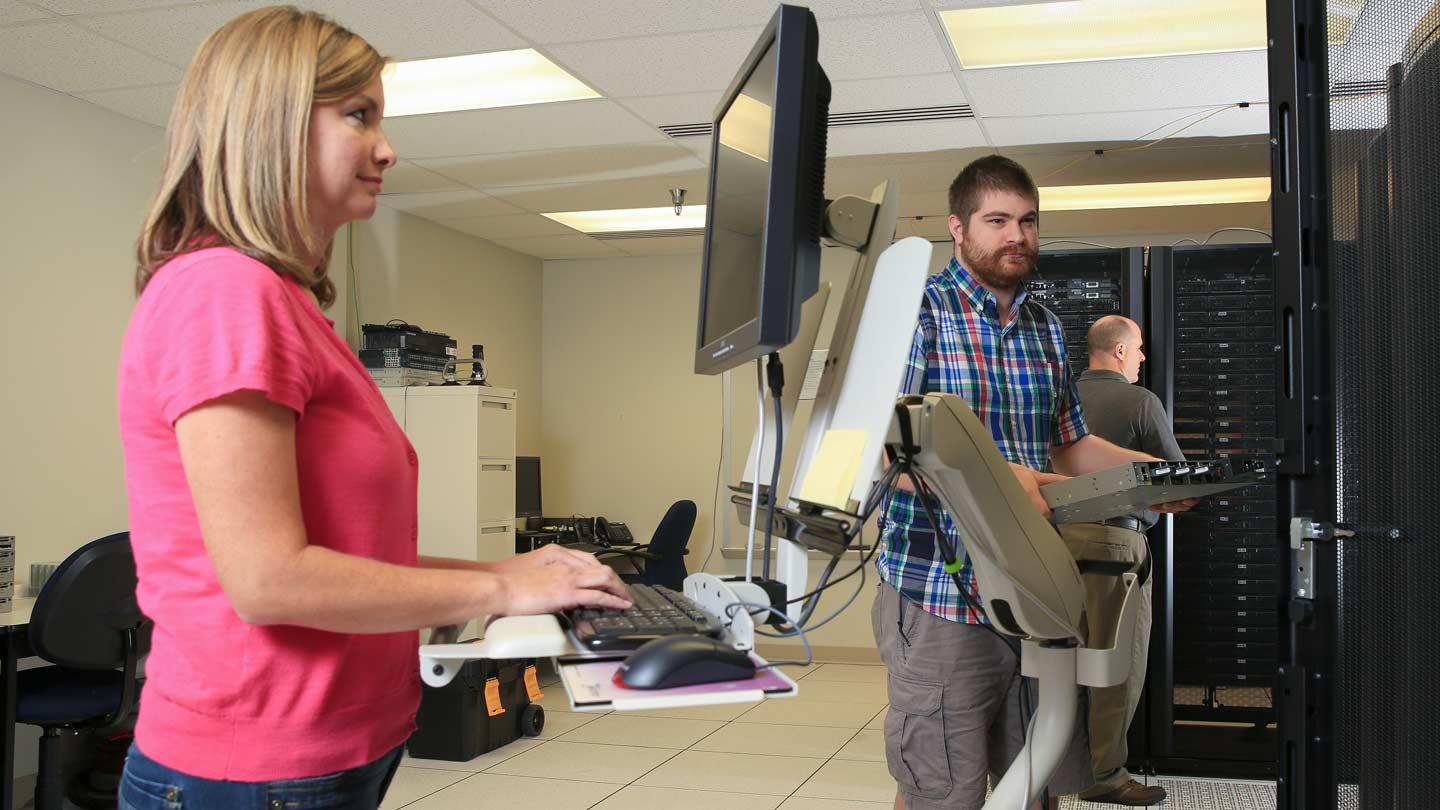
UAH’s Information Technology and Systems Center is staffed by 45 full-time employees – many of whom are UAH alumni – and 15 students at the undergraduate and graduate levels.
Michael Mercier | UAH
The field of information technology has changed enormously in the two decades since the establishment of UAH’s Information Technology and Systems Center (ITSC). One thing that remains the same, however, is the Center’s mission to apply its well-established expertise to solving real-world problems through the transfer of innovative technologies and knowledge.
"We have been involved in data initiatives with high impacts for many years," says Dr. Sara Graves, who serves as the director of ITSC and a professor for UAH’s Department of Computer Science. "The rapidly changing nature of the field has provided opportunities for applying the unique capabilities of ITSC."
Among ITSC’s many research thrusts, which include distributed information systems, software systems interoperability, and modeling and simulation, several others have moved to the forefront in recent years: artificial intelligence (AI) and deep learning, geospatial technologies, wargaming, data analytics, and cybersecurity. This is in large part a response to the growing demand for assistance in analyzing and using the large volume of data in these areas from across academia, government, and industry.
The rapidly changing nature of the field has provided opportunities for applying the unique capabilities of ITSC.
"Deep learning," says Dr. Graves, "is an exciting and fast-growing technology that represents a leading edge in machine-learning research." Also known as deep-structured learning or hierarchical learning, deep learning is the application of an artificial neural network to "learn" features from a large system of data neurons arranged in several hidden layers. And while the concepts behind deep-learning approaches are not new, recent advances in computer hardware such as graphical processor units and large data storage handling capabilities have allowed deep learning to become very important in data analytics.
"Until recently, conventional machine-learning approaches – including neural networks – have required careful engineering, skill, and effort to extract and select informative features from the data," says Dr. Graves. "But recent advances in machine learning have led to the development of deep neural networks that employ a cascade of many layers for automated learning." These networks are able to use millions and millions of input data sets with little or no pre-processing for accurate classification and can handle a wide variety of tasks, including natural language processing, acoustic modeling, bioinformatics, and image classification. "In fact," she adds, "recent research has shown that deep-learning approaches often outperform conventional approaches."
Like deep learning, geospatial technologies have evolved considerably from the first maps that human beings created centuries ago. Now the term is used to describe a suite of advanced equipment and software tools that provide users with the ability to map, measure, visualize, and analyze the Earth, as well as human interactions with the Earth. "There are now a variety of types of geospatial technologies," says Dr. Graves. "These include remote sensing, geographic information systems, global positioning systems, and internet mapping technologies."
Dr. Sara Graves, director of ITSC, and Dr. John Beck, a principal research scientist at the Center.
Michael Mercier | UAH
Each has its own unique and specific purpose. Remote sensing describes data and imagery collected from either airborne or space-based camera and sensor platforms, while global positioning systems rely on a network of satellites to give precise coordinate locations. Geographic information systems, by contrast, provide software tools for mapping and analyzing data that has been georeferenced. And internet mapping technologies allow researchers to view and share geospatial data via the internet.
Under Dr. Graves’ leadership, the ITSC team has been actively engaged in conducting state-of-the-art geospatial technology research focused on the following areas: geospatial data storage, management, and distribution; cybersecurity for geospatial data; geospatial data cloud processing; imagery applications from unmanned aerial systems; geospatial-enabled databases; geospatial data integration with modeling and simulation software; and web mapping services and visualization tools. "With increasing interest in the spatial aspects of problem solving, ITSC is exploring more applications in this dynamic area," she says.
As for the research thrust in cybersecurity, Dr. Graves can sum up the current state of the field up in four words: "Situations are constantly changing," she says wryly. Whereas a relatively short time ago, it was possible for someone to look at a computer monitor and spot a hacker on the network, now there is simply too much data moving over modern computer networks for them to examine. As a result, an intrusion can be virtually impossible to spot. "Making matters worse," she continues, "modern hackers use tools that leave very few clues. What were previously telltale signs of an attack are now sprinkled in and lost among the terabytes of regular data that travel across computer networks every hour."
To address this, the ITSC team relies on advanced AI and data analytics. "The Center’s researchers are experimenting with new forms of AI that are capable of locating hackers and isolating them from the rest of a network," says Dr. Graves, adding that ITSC receives a lot of requests from local employers to help prepare tomorrow’s workforce to tackle cyberbreaches. "ITSC is also focusing on security issues in software and data as the need for expertise in these topics increases."
Undoubtedly, as the field of information technology and systems continues to grow and change, tomorrow will bring even greater challenges. But just as undoubtedly, ITSC will grow and change to keep up, as it has for the last 20 years. "Harnessing the data revolution presents continuing challenges and opportunities that make our jobs even more exciting as we look toward the future," says Dr. Graves.